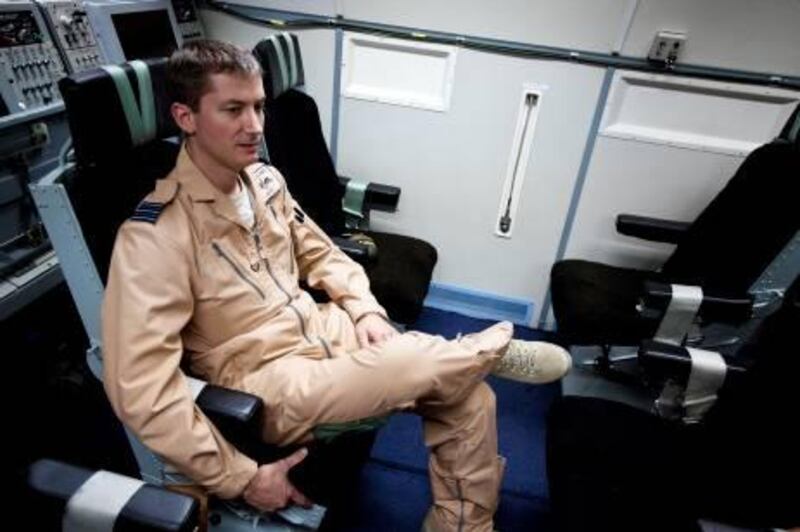AL DHAFRA AIR BASE // The roar of jets flying overhead faded into a distant thunder as the Emirati F-16s and Mirage fighters rocketed towards the horizon.
The British RAF pilots and their Emirati partners were gearing up for Air Khanjar, or "dagger" in Arabic. The military training exercise mainly consisted of battle scenarios acted out over the skies of the UAE.
Wing Commander Paul Moss, the commander of the RAF's 8 Squadron, led the team that flew the E-3D Sentry surveillance plane, which oversaw the operation.
Wing Commander Moss pointed out the plane's seven-tonne, nine-metre diameter radar disc.
"It's like flying a [Boeing] 707 with an elephant strapped to its back, and it doesn't even notice," he said.
The plane, an Airborne Warning and Control System (Awacs), can fly up to 12.8km in altitude.
Working with the UAE Air Force allowed the RAF to expose areas that needed work, but Al Dhafra Air Base also provided good weather and airspace conditions for training, he said.
"Operating with another air force that has slightly different ways of doing business, it's always an education for us," he said. "What's really good about a place like this is the conditions. I really mean the conditions for the airplanes. They really like this kind of humidity and this kind of heat."
"Bearing in mind last night in the UK they had 10 centimetres of snow," he added, laughing.
The Air Warfare Centre, which the UAE bills as a premier centre for training fighter pilots, also provided ample airspace for exercises.
"The Air Warfare Centre here is very proactive in co-ordinating with the local air traffic agencies, so they provide large blocks of airspace, which is key to facilitating this kind of exercise," he said.
The Awacs can get into place to survey exercises with a lot of complex manoeuvring, he said.
"If you are constrained by airspace… the UK is one of the most congested in the world - you don't have that freedom," he said.
For the UAE, the opportunity to work with another air force was "a chance for them to see how robust their training is", said Wing Commander Jez Attridge, the commanding officer of the 906 Expeditionary Force of the RAF, which took part in the exercise. "And from what we've seen, their training is as deep and as complicated as ours."
He said the abilities of the UAE Air Force appeared "very impressive".
"They've got a very flexible approach to the task that they're in, they adapt well to the circumstances while flying with us, and they have excellent weapons systems that complement the Eurofighter Typhoons, so it was a very seamless transition," he said.
The exercises included mixed fighter training, in which Emirati F-16s and Mirages fought in air combat scenarios alongside British Typhoons. The Sentry aircraft watched over the exercises and communicated with their planes, giving them instructions and determining who won the combat scenarios.
The Awacs also set up a link with HMS Cumberland, a navy frigate, and passed down images and information of the surroundings that boosts the awareness of the ship.
"In intense air warfare [...] it's really quite busy," he said. "It's something like the London Stock Exchange in here."







